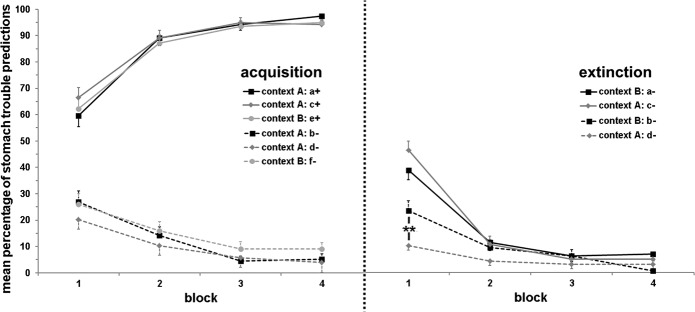Figure 1.
Mean (±SEM) percentage of stomach trouble predictions to critical stimuli across four blocks (including two trials each) during acquisition (left) and extinction (right) across all three experimental groups (no significant group differences emerged). Stimuli were presented in context A or B and were associated with stomach trouble (+) or not (−) during acquisition; during extinction, all critical stimuli were no longer paired with stomach trouble (−). Stimulus a+ underwent a change in contingency and context, stimulus c+ was subject to a change in contingency, and stimulus e+ was not presented during extinction. The control stimulus b− underwent a change in context, stimulus d− did not undergo any change, and stimulus f− was not shown during extinction. Successful learning of the contingencies of all stimuli was observed during acquisition. During extinction, the contingency and outcome change was also successfully learned over time. In addition, participants predicted more stomach trouble toward b− compared to d− during the first block of extinction. (**) P < 0.01.

